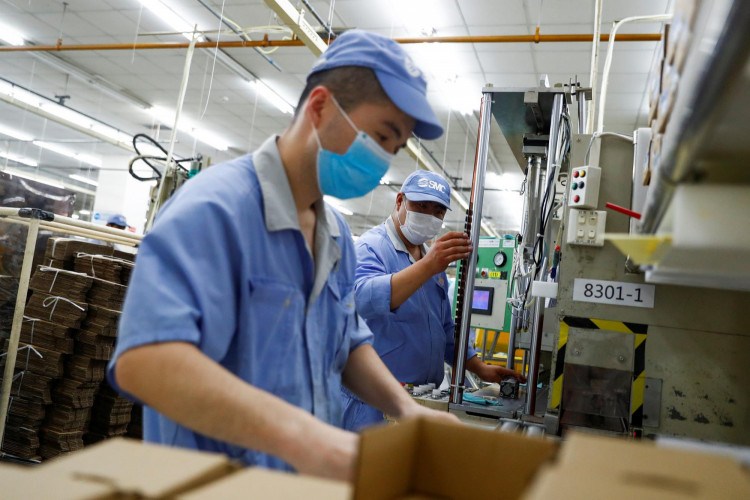An index of manufacturing activity in China fell in May, highlighting the sluggish rate of recovery from the first quarter decline. According to data released Sunday by the National Bureau of Statistics, the official index of manufacturing purchasing managers declined to a worse than anticipated 50.6 from 50.8 a month earlier.
The index for non-manufacturing rose to 53.6. Readings over 50 suggest conditions are improving. The data show that the country's rebound from the pandemic lockdowns risk faltering after a preliminary improvement backed by pent up demand.
Although factories are largely back in operation and production is again on the rise, a drop in order has given the industry quite a jolt.
NBS senior statistics analyst Zhao Qinghe pointed to a decline in the nation's imports and exports, stating the global epidemic and economic situation remain serious and complicated, and demand on the foreign market continues to narrow.
He disclosed that indexes on new export orders and imports have remained relatively low, adding that that the pace of economic rebound is steady and growing, but some industries such as textiles and apparel are weak.
Capital Economics' Julian Evans-Pritchard observed that the PPI recession was its steepest monthly decline since the 2007-2008 world financial turmoil.
The pandemic has battered the global marketplace, which is facing the most serious decline since the Great Depression, with companies closing down causing massive unemployment increases.
The economic downturn has strained demand across the globe, with a huge number of businesses needing to charge less for their goods. That, as a result, impacts heavily on income and growth potential, and may also sap momentum from the economy as a whole.
China's economy dwindled 6.8 percent from a year ago in the first three months this year, the first shrinkage since quarterly records were released. Economists stated it will take a few months before wider operation returns to pre-crisis levels, even if a fresh wave of infections could be prevented.
Although most companies have restarted, many factories are still having difficulty with overseas orders being reduced or cancelled, as lockdowns drive the global economy into recession. In addition, local demand remains depressed with increased job losses and fears about a second wave of infections.
Analysts surveyed by The Wall Street Journal had predicted the May figures to soar to 51.5. Orders from the manufacturing sector is a prime gauge of economic activity as factories acquire supplies in preparation for demand. China's output sub-index dropped from 53.7 to 53.2 in April. Total new orders sub-index was up from 50.2 to 50.9.






